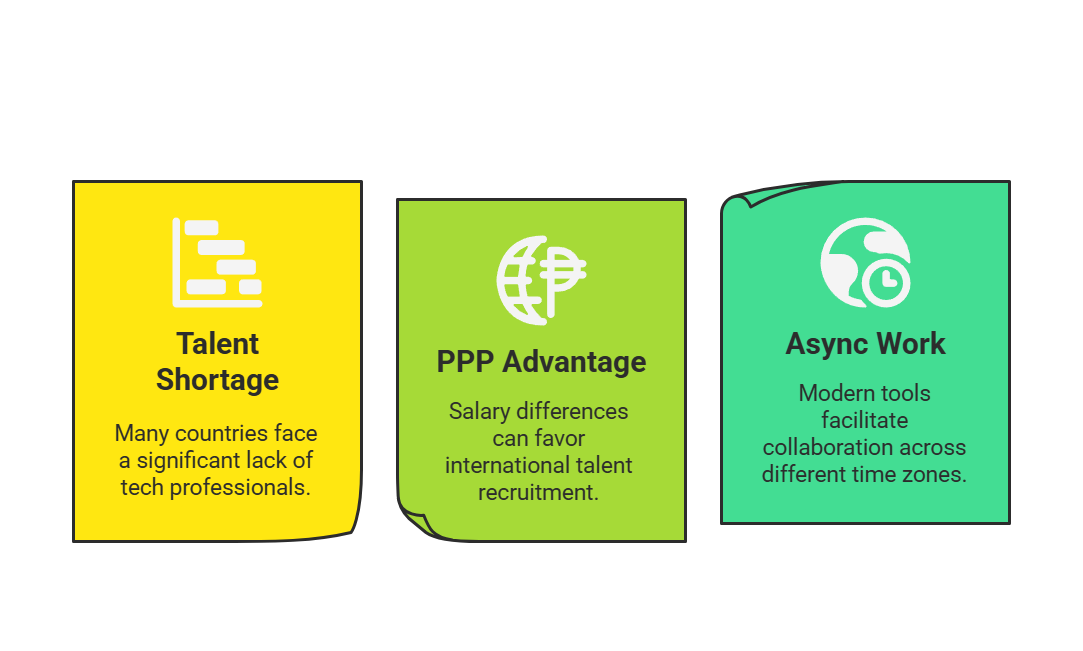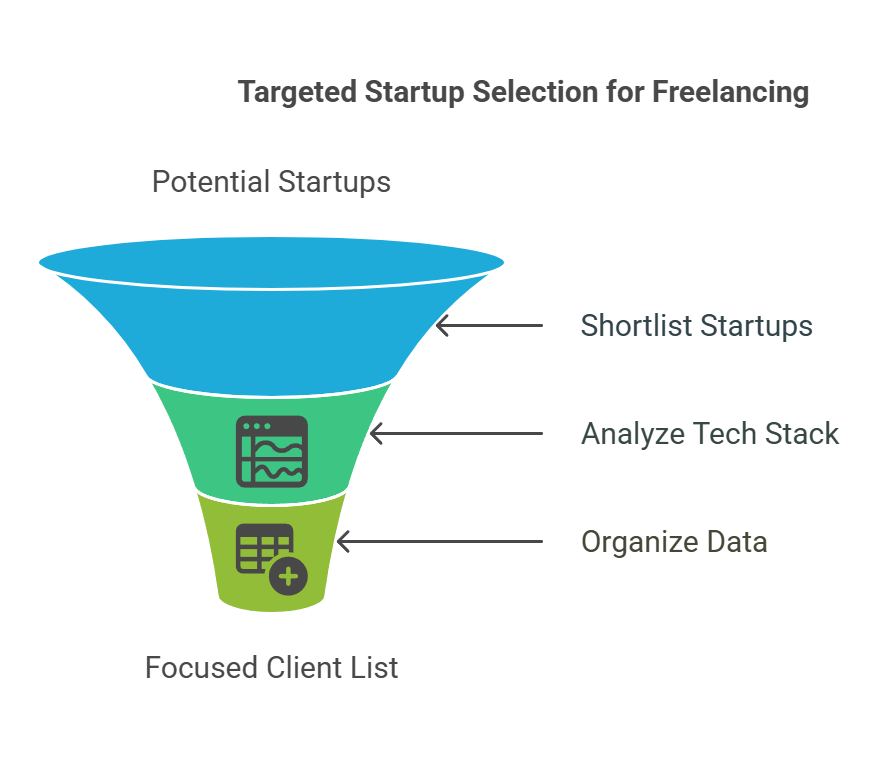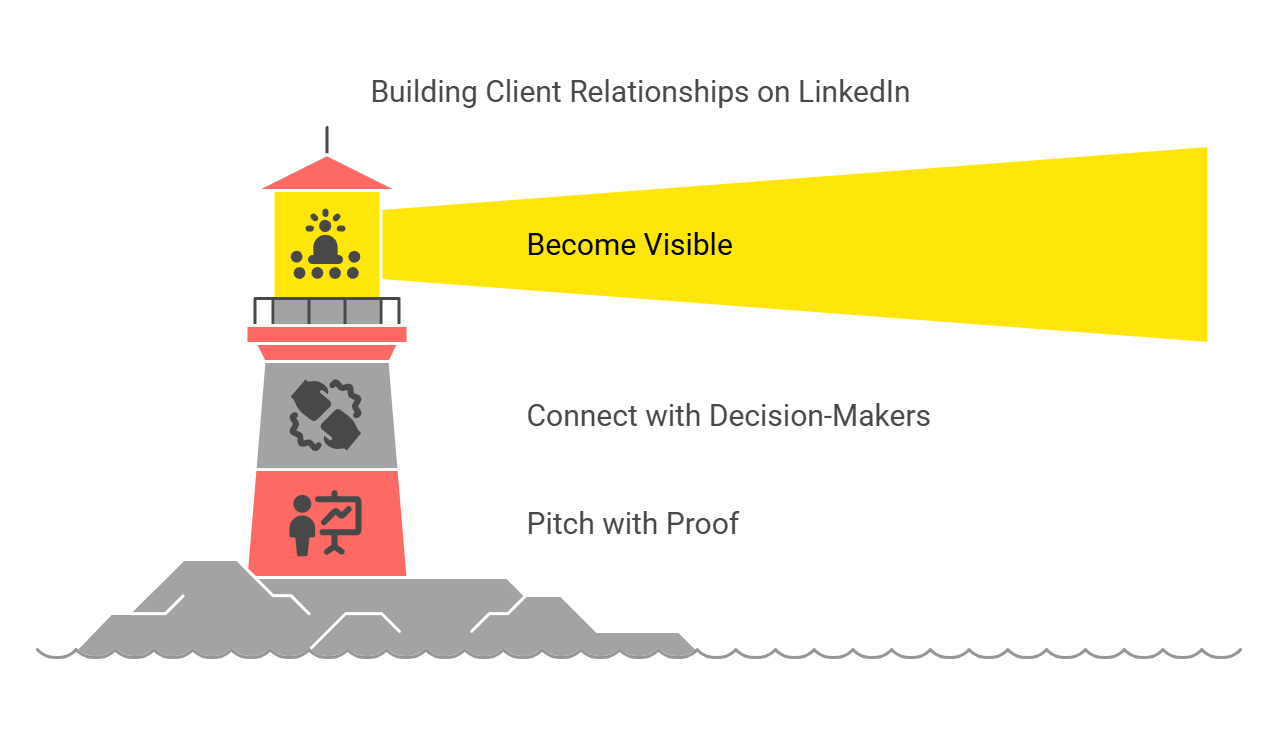How to Land a Remote Job Abroad as an Indian Fresher: A Step-by-Step Guide
 Aditya Kumar Gupta
Aditya Kumar GuptaTable of contents
- Why This Works Now (And Why Most Indians Miss Out)
- Step 1: Pick Your “Golden” Countries
- Step 2: Build a Profile That Stands Out
- Step 3: Find the RIGHT Companies
- Step 4: The LinkedIn/Twitter Outreach Funnel
- Step 5: Ace the Interview
- Step 6: Negotiate Like a Pro
- Step 7: Stay Consistent
- Final Checklist
- Your Journey Starts Today

You're reading through LinkedIn while seated in your home bedroom or college dorm.
Another post appears: "A US startup hires an Indian developer on a remote basis for $8k per month!" Your heart is pounding. You ask yourself, "How do they do it?" "Can someone like me even do that?"
Yes, but only provided you steer clear of the typical blunders made by the majority of Indians.
The truth is that thousands of startups in countries like Germany, Canada, and the UAE are desperately hiring remote talent.
They don’t care about your degree, your age, or where you live. They care about one thing: Can you solve their problems better and cheaper than local hires?
In this guide, I’ll show you exactly how to tap into these opportunities, even if you’re a fresher with no connections.” I’ve broken this down into 7 actionable steps, including:
The 5 countries where Indian applicants have the highest chance of getting hired (page 3)
A foolproof LinkedIn strategy to get CEOs to notice you (page 5)
How to negotiate salaries that are “low” for them but life-changing for you (page 8)
Let’s get started.
Why This Works Now (And Why Most Indians Miss Out)
Before we dive into the “how,” let’s talk about the “why.” Remote work isn’t new, but three recent shifts have created a golden window for Indians:
The Global Talent Shortage: Countries like Germany have 700,000+ unfilled tech jobs. Startups can’t find enough local developers, so they’re looking abroad.
Purchasing Power Parity (PPP) Advantage: A salary of $3,000/month seems low to a startup in Berlin but translates to ₹2.5 lakhs for you—3x what Indian companies pay freshers.
The Rise of Async Work: Tools like Slack and Notion make it easier to collaborate across time zones. You no longer need to stay awake till 3 AM for meetings!

Most Indians fail because they:
Apply only to US companies (too crowded)
Use generic resumes (“Skilled in MERN stack”)
I've given up after 2 weeks of no replies
You’ll avoid these pitfalls with the step-by-step plan below.
Step 1: Pick Your “Golden” Countries
Not all countries are equally remote-friendly. Based on hiring trends, salaries, and visa policies, here are the top 5 countries to target as an Indian fresher:
1. Germany: The Underrated Gem
Why It’s Great:
Berlin’s startup scene is the 2nd largest in Europe (after London).
Germans value punctuality and precision—skills Indians are known for.
English is widely spoken in tech companies.
Salary Range: €2,500–€4,500/month (₹2.2–4 lakhs).
Where to Apply:
BerlinStartupJobs.com: 100+ remote roles posted weekly.
LinkedIn: Search “Remote Developer Germany.”
EU-Startups.com: Filter by “Germany” and “Remote.”
Pro Tip: Learn basic German phrases like “Können wir Englisch sprechen?” (Can we speak English?)—it impresses recruiters!
2. Canada: The Visa-Friendly Hub
Why It’s Great:
Canada’s Global Talent Stream (GTS) program fast-tracks visas for tech workers.
Startups in Toronto and Vancouver are scaling rapidly.
Salary Range: $3,500–$5,500/month (₹2.9–4.6 lakhs).
Where to Apply:
VanHack.com: This site Specializes in connecting Indian techies with Canadian firms.
AngelList Canada: Early-stage startups offering equity + remote roles.
3. UAE: Tax-Free Money, Minimal Time Zones
Why It’s Great:
Dubai’s 0% income tax means you keep every dirham you earn.
Only a 1.5-hour time difference from India.
Salary Range: AED 12,000–18,000/month (₹2.7–4 lakhs).
Where to Apply:
DubaiStartupHub.ae: Government portal for tech startups.
GulfTalent.com: Filter by “IT/Software” and “Remote.”
4. Australia: High Salaries, IST-Friendly Overlap
Why It’s Great:
Australian salaries are among the highest globally.
Work hours overlap with IST by 2–5 hours (e.g., 8 AM IST = 12:30 PM in Sydney).
Salary Range: AUD 5,000–7,000/month (₹2.7–3.8 lakhs).
Where to Apply:
SEEK.com.au: Australia’s largest job board—use keywords like “remote” and “APAC.”
StartupJobs.asia: Filter by “Australia” and “Software Development.”
5. Netherlands: Europe’s Remote Work Champion
Why It’s Great:
Companies like GitLab and MessageBird are 100% remote.
30% Tax Ruling: Expats can pay just 30% income tax for 5 years.
Salary Range: €3,000–€4,500/month (₹2.6–4 lakhs).
Where to Apply:
Undutchables.nl: Jobs for non-Dutch speakers.
DutchDevJobs.nl: Focuses on tech roles.
Avoid These: USA (too competitive), UK (visa hurdles), Singapore (prefers locals).
Step 2: Build a Profile That Stands Out
Foreign startups get 100+ applications per job. To get noticed, your profile must scream, “I’ve done this before!” Here’s how:
A. Rewrite Your LinkedIn Profile
Most Indian freshers make these mistakes:
Headline: “Computer Science Student | Seeking Opportunities” ❌
Summary: “Hardworking and passionate developer” ❌
Do This Instead:
Headline: “Full-Stack Developer | Helping German Startups Build Scalable Apps with MERN + AWS” ✅
About Section: Tell a story. Example:
“Last semester, I built a warehouse management tool for a Berlin-based SaaS startup. Despite the 4.5-hour time difference, I delivered the project 2 weeks early, cutting their deployment costs by 25%. Now, I’m looking to help more EU startups optimize their tech stack.” ✅
Skills: Remove generic terms like “team player.” Add niche skills like:
AWS Lambda
Next.js
SEO Audits
Cross-Cultural Communication
B. Create a Portfolio Website
Your portfolio is your #1 weapon. Here’s what to include:
Projects Section:
Project 1: “E-Commerce Dashboard for Dubai Logistics Startup”
Tech Stack: React, Node.js, MongoDB
Results: “Reduced page load time from 8s to 2.3s.”
Project 2: “SEO Optimization for Australian EdTech Blog”
Tools: Ahrefs, Google Search Console
Results: “Increased organic traffic by 150% in 3 months.”
Testimonials: Even if you’ve never had a client, ask a professor or friend to write:
“Rahul debugged our college event website overnight. His AWS skills are top-notch!” – Prof. Sharma, IIT Delhi
Blog: Write 2–3 posts like:
“How I Landed My First Remote Job in Germany”
“3 Time-Zone Hacks for Working with EU Clients”
Free Tools to Build Your Portfolio:
Webflow: Drag-and-drop builder (no coding).
Vercel: Host your React/Next.js site for free.
Step 3: Find the RIGHT Companies
Most applicants spam every job posting they see. Instead, use this targeted strategy:
Shortlist 100–200 Startups:
Use Crunchbase.com to filter companies by:
Location: Germany, Canada, UAE, etc.
Industry: SaaS, Fintech, Edtech (high demand for developers).
Funding: Seed to Series B (they’re hiring aggressively).
Example Search:
“SaaS startups in Berlin founded after 2020 with 10–50 employees.”
Stalk Their Tech Stack:
Go to StackShare.io and search for the company.
If they use MERN, AWS, or React, apply! If they use niche tools you don’t know, skip.
Track Everything in a Spreadsheet:
Columns: Company Name, Website, CTO’s LinkedIn, Tech Stack, Job Openings.
Update weekly—startups hire fast!

Step 4: The LinkedIn/Twitter Outreach Funnel
Cold applying to job boards gives a 1% response rate. To hit 10–20%, use this 3-phase funnel:
Phase 1: Become Visible
LinkedIn Posts:
Post 3x/week. Examples:
“Just helped a Canadian startup fix their AWS billing issue. Here’s how I saved them $1,200/month → [Link to case study]”
“Why German startups prefer hiring remote devs from India: 3 reasons.”
Use hashtags: #RemoteWork, #GermanyTech, #CanadaJobs.
Twitter:
Share bite-sized tips: “PSA: Australian startups pay $5k/month for Next.js devs. No, you don’t need a visa.”
Engage with founders: Reply to their tweets with insights, not generic praise.
Phase 2: Connect with Decision-Makers
Who to Target:
Startup CEOs/CTOs (for small teams).
HR heads (for companies with 50+ employees).
Connection Request Template:
Hi [First Name], I recently came across [Startup Name] and loved your work on [specific product/feature]. I’ve been helping [similar startups] [solve problem, e.g., “optimize cloud costs”]—would love to connect and share ideas!
Phase 3: Pitch with Proof
Follow-Up Message (After They Accept):
Thanks for connecting! I noticed [Startup Name] is [specific challenge, e.g., “expanding to the APAC market”]. I recently built [relevant project] that [result, e.g., “boosted user retention by 40% for a Sydney-based SaaS]. Would you be open to a quick chat?
Attach a Loom Video: Record a 2-minute video walking through your portfolio or explaining how you’d solve their problem.
Pro Tip: For UAE startups, mention your willingness to work in their time zone (e.g., 9 AM–5 PM GST).

Step 5: Ace the Interview
Foreign startups test two things:
Technical Skills: Can you code/debug in real time?
Remote Readiness: Can you work independently across time zones?
Technical Prep
LeetCode: Practice 1–2 problems daily (focus on Medium difficulty).
Take-Home Assignments: Treat them like paid projects. Add comments explaining your code.
AWS/Azure Scenarios: Be ready for questions like, “How would you deploy this app securely?”
Culture Fit Prep
Sample Questions:
“How do you handle deadlines in a different time zone?”
“Describe a time you solved a problem without supervision.”
Your Answers:
“I use async tools like Loom and Notion to stay updated without meetings.”
“I delivered a project for a Berlin client by working 6 PM–1 AM IST daily.”
Step 6: Negotiate Like a Pro
Indians often undercharge due to fear of rejection. Here’s how to price confidently:
Research Salary Benchmarks:
Check Levels.fyi or Glassdoor for roles like “Junior Developer” in your target country.
Example: If the average salary in Germany is €4,500/month, ask for €3,000.
The PPP Pitch:
“My rate is €3,000/month, which is 33% below your local average. This lets you save on costs while I earn a life-changing salary in India. Win-win!”
Ask for Perks:
Learning budget ($500/year for courses).
Hardware stipend ($1,000 for a laptop).
Payment Tools: Use Wise.com or PayPal for low-fee currency conversion.
Step 7: Stay Consistent
Landing a remote job abroad is a numbers game. Here’s a 6-month roadmap:
Month 1–2: Build portfolio + LinkedIn presence.
Month 3–4: Apply to 10–15 companies/week.
Month 5–6: Land freelance gigs ($1–2k/month).
Month 6+: Secure a full-time role ($3–5k/month).
Final Checklist
Before you hit “apply,” ensure you’ve:
☑️ Shortlisted 100+ startups in Germany/Canada/UAE.
☑️ Rewritten LinkedIn profile with niche keywords.
☑️ Practiced 20+ LeetCode problems.
☑️ Sent 5 personalized LinkedIn connection requests/day.
Your Journey Starts Today
Remember, the CEO of that Berlin startup isn’t looking for someone with 5 years of experience. They’re looking for someone who can solve their problem tomorrow.
Your next step? Open BerlinStartupJobs.com right now. Find 3 companies that use MERN or AWS. Send them a LinkedIn message using the templates above.
The world is bigger than your hometown—and it’s waiting for you. 🌍✨
Got questions? Drop a comment below or DM me on Twitter @adityaguptareal. Let’s get you that dream job!
Subscribe to my newsletter
Read articles from Aditya Kumar Gupta directly inside your inbox. Subscribe to the newsletter, and don't miss out.
Written by

Aditya Kumar Gupta
Aditya Kumar Gupta
Hi there! I'm Aditya, a passionate Full-Stack Developer driven by a love for turning concepts into captivating digital experiences. With a blend of creativity and technical expertise, I specialize in crafting user-friendly websites and applications that leave a lasting impression. Let's connect and bring your digital vision to life!